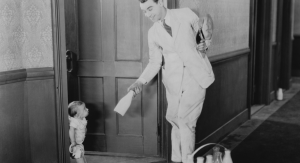After exploring whether parenting was easier in the 1950s before the age of social media, I wanted to further examine what parenting was like in the 1950s. My grandmother shared fond memories of raising young children during the Baby Boom. At that time, single-income households were common as were single-car households. Of course, the cost of living was much lower than today. Given these circumstances, groceries and other household goods were often delivered to homes, there weren’t a lot of organized activities for young children, and most social events took place on the evenings and weekends when husbands were home.
Cost of Living in the 1950s Compared to Today
Inflation makes this hard to put this into perspective, but parenting in the 1950s involved much lower grocery bills. My grandmother said she spent $8 to $10 a week on groceries on a family of four. In today’s dollars, that’s about $88 to $110, which still seems low the way prices are going up. Of course, my grandmother had a much smaller budget to work with given the average incomes in the 1950s.
My grandparents bought a ranch house in Sharon, Massachusetts for $13,600 with a monthly mortgage of $99. She paid a baby-sitter $.50 an hour for their weekly date night.
Before buying their first home, my grandparents had rented apartments in New York and Boston. With the availability of the GI loan, they started to save for a house and had to carefully budget. My grandfather worked two jobs to save for a house, but it was worth it. “It’s wonderful to own your own home,” my grandmother said.
When they first moved to the suburbs, my grandfather took their only car into the city to work each day, which was common at the time. Eventually they decided to get a second car, and they found a used one for $25. It wasn’t very reliable, but it did help my grandmother run errands outside the house.
Deliveries of many groceries
As most housewives were without a car for grocery shopping, a lot of essentials were brought to residential neighborhoods. My grandmother said that various delivery men came each week to sell milk, bread, eggs, and produce to her and the other housewives. My grandmother got to know one delivery driver who was nicknamed “Eddie the Fruit Man.”

Today we have so many options for grocery delivery and curbside pickup, which is great. But it’s still not quite the same as having the store brought to you by a friendly, local vendor whom you are on a first name basis with.
Lack of organized activities for young children
I asked my grandmother what activities she did with her kids when they were young. Her response was that sometimes the whole family would go out for ice cream after dinner.
Back then, there weren’t a lot of activities for young children. She said once they were in school, they joined the Boy Scouts and the Girl Scouts, but before that they just played with the neighborhood kids. There wasn’t any librarian-led Story Times, no Mommy and Me groups, etc. At the time, there also wasn’t a playground nearby. I think there weren’t organized activities because the moms just got together with friends and neighbors on their own so there wasn’t any need for it.
Social Activities for Parents
In addition to getting together with other mothers in her neighborhood, my grandmother was part of a weekly bridge group and the Sisterhood at her local temple. Both groups had events in the evening because the husbands were home to stay with the kids. The Sisterhood had luncheons (on the weekends), speakers, and regular meetings. My grandparents also went to dances and parties in the evening occasionally.
My grandmothers’ parents lived in New York, so they weren’t able to baby-sit, and my grandfathers’ parents lived in Newton, which was also far for frequent baby-sitting. Sometimes her mother-in-law offered to baby-sit during the day.
“It felt like a vacation,” she said. She usually went into Boston when she had child-free time.
A lower cost of living, far fewer children’s activities to drive to, and fresh groceries brought to your door sounds like much a simpler and enjoyable way to do things. With the COVID-19 pandemic, we experienced this simpler life when everything shut down. Sometimes I miss those days! And I know my grandmother misses when her children were young.










